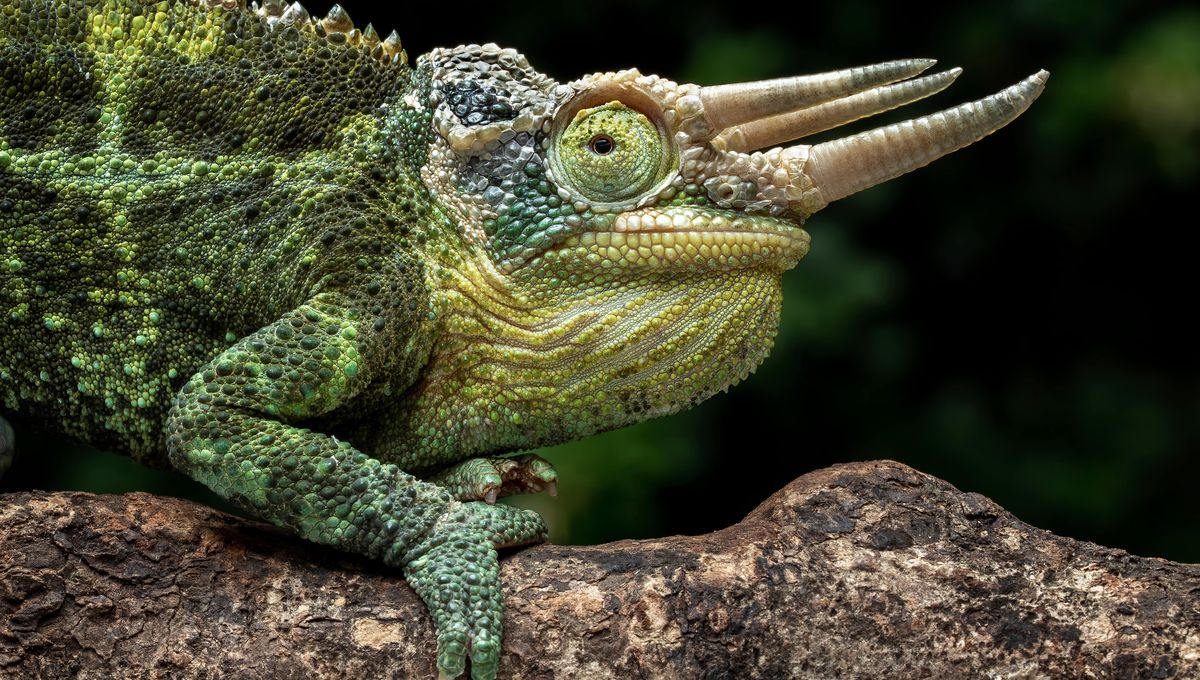
Goats have horns, cows have horns, and of course, so do rhinos. None of these creatures are even remotely surprising in that capacity, but did you know there’s a reptile species out there with horns that Triceratops would be jealous of? And that species is Jackson’s three-horned chameleon (Trioceros jacksonii).
This triple-horned species is found wild in the highlands of Kenya and Tanzania at elevations above 1,500 meters (4,921 feet). An invasive population is also established in the Hawaiian Islands due to the escape and release of dozens of pet trade animals in 1972.
In fact, the Jackson’s three-horned chameleon “has been the second most heavily exported chameleon species since 1972, representing more than 8% of the global chameleon pet trade market,” explains the IUCN, although some research has suggested that it is now down to 9th place.
According to the Hawaii Invasive Species Council, it is illegal to move the animals between islands, or to sell the animals for a profit on the mainland. The ramifications for this are a large fine and even potential prison time.
This species has been popular in the pet trade not only because of its striking emerald green color, but also for a particularly prominent feature – three magnificent horns. These are only sported by males – which makes it easy to tell the females and males apart – who use them to protect their territory, whereby they lock horns and try to push each other out of trees.
Females can be green or gray, and both sexes have long prehensile tails and the ability to change their color depending on how they are feeling. Jackson’s three-horned chameleons also possess what’s called zygodactyl feet, which means they have two toes facing forward and two facing back to help them grip onto tree branches (some birds also have this feature).
Unusually for a reptile, the females are ovoviviparous, meaning the eggs develop within the female before she gives birth to live young. Before that point, the two chameleons have a complex mating ritual with many color changes, throat displays, and even threatening gestures.
Source Link: Thought Horns Were Just For Cows? This Striking Triple-Horned Chameleon Proves Otherwise